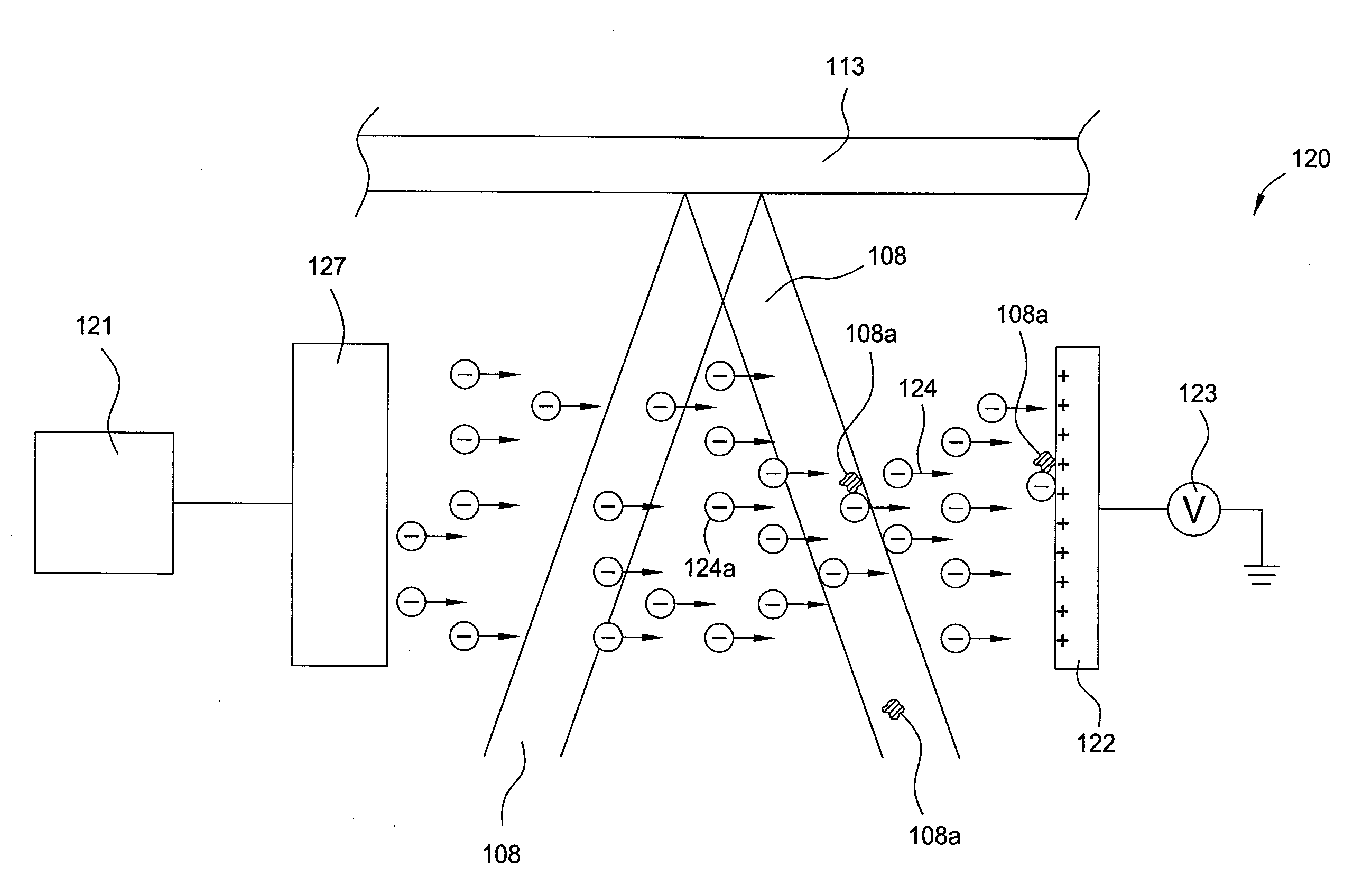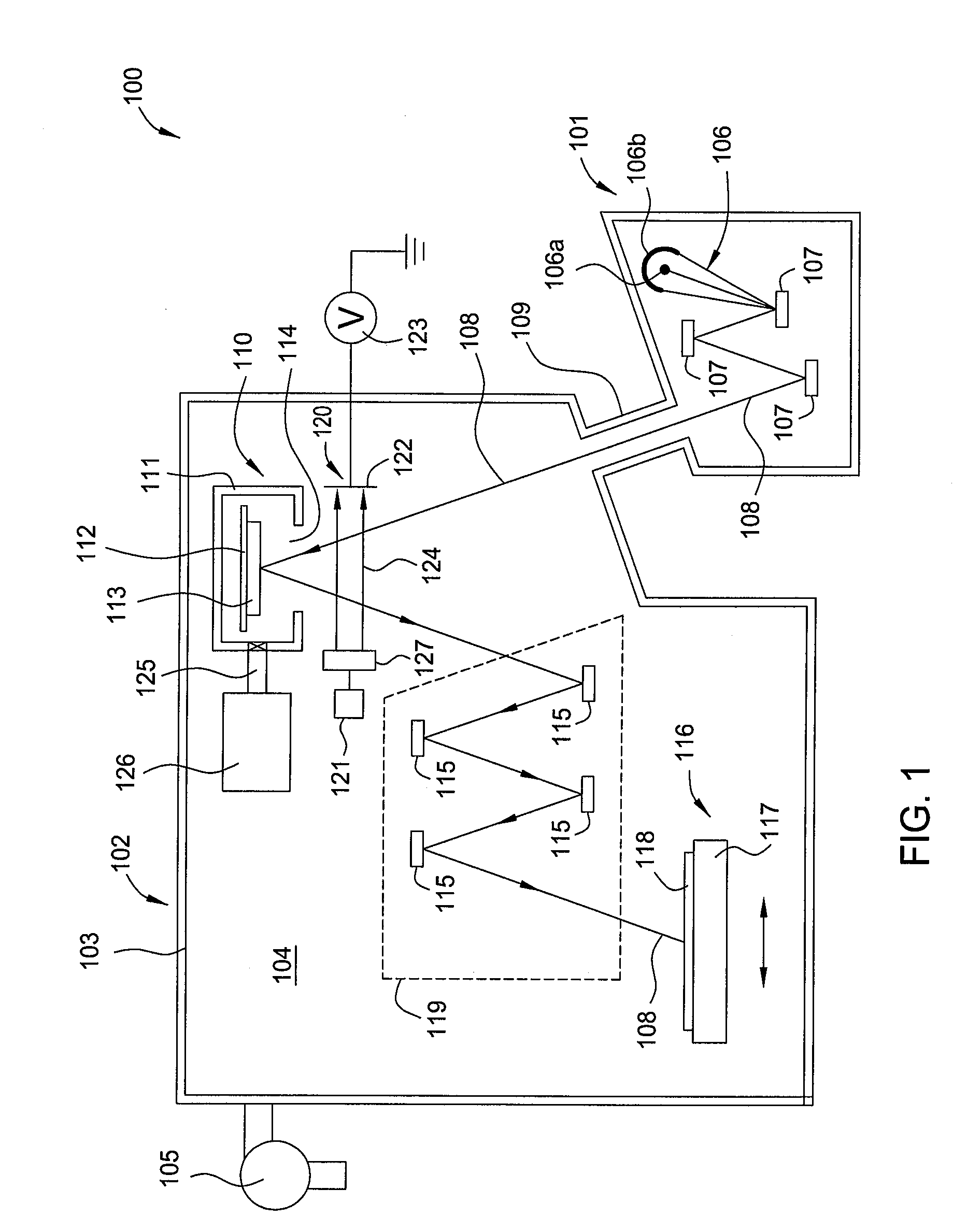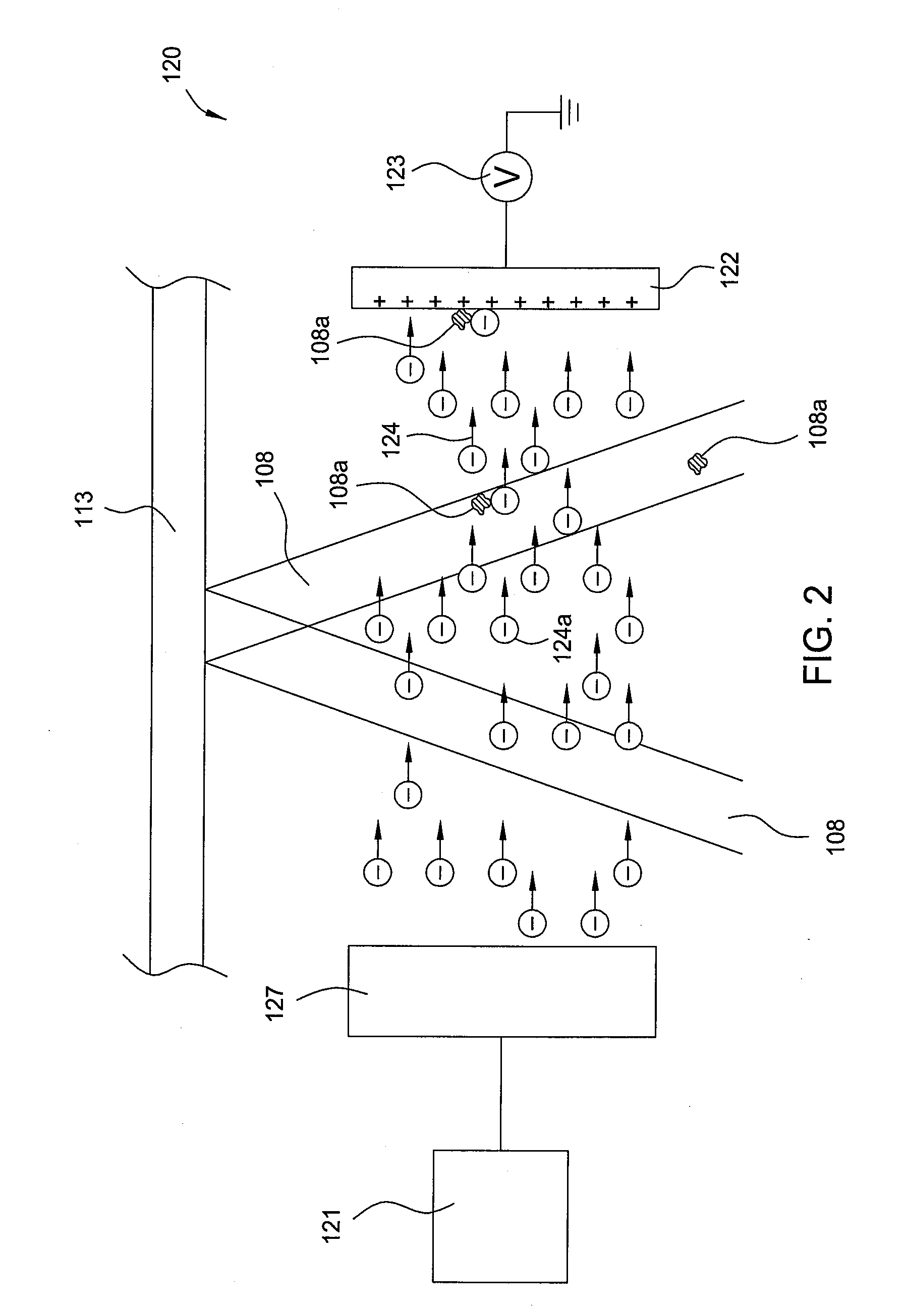Contamination prevention in extreme ultraviolet lithography
a technology of ultraviolet light and contamination prevention, applied in the field of particle contamination prevention, can solve the problems of insufficient use of conventional transmission masks, inability to protect masks, and inability to print even small device structures at the same tim
- Summary
- Abstract
- Description
- Claims
- Application Information
AI Technical Summary
Problems solved by technology
Method used
Image
Examples
Embodiment Construction
[0017]Embodiments of the present invention generally provide apparatus and method for preventing particle contamination during lithography. Particularly, embodiments of the present invention provide methods and apparatus for removing debris particles from a beam of radiation during photolithography.
[0018]In one embodiment, a charged species source and a collecting plate are disposed on opposite sides of a beam of radiation used in lithography. The charged species source is configured to project a stream of charged species and the collecting plate is configured to receive the stream of charged species from the charges species source. The stream of the charged species is configured to intersect the beam of radiation, and to use electrostatic force to remove debris particles from the beam of radiation, thus, preventing the debris particles from contaminating the mask, the substrate being processed, and any devices in the path of the beam of radiation. The charged species source and the...
PUM
 Login to View More
Login to View More Abstract
Description
Claims
Application Information
 Login to View More
Login to View More - R&D
- Intellectual Property
- Life Sciences
- Materials
- Tech Scout
- Unparalleled Data Quality
- Higher Quality Content
- 60% Fewer Hallucinations
Browse by: Latest US Patents, China's latest patents, Technical Efficacy Thesaurus, Application Domain, Technology Topic, Popular Technical Reports.
© 2025 PatSnap. All rights reserved.Legal|Privacy policy|Modern Slavery Act Transparency Statement|Sitemap|About US| Contact US: help@patsnap.com



